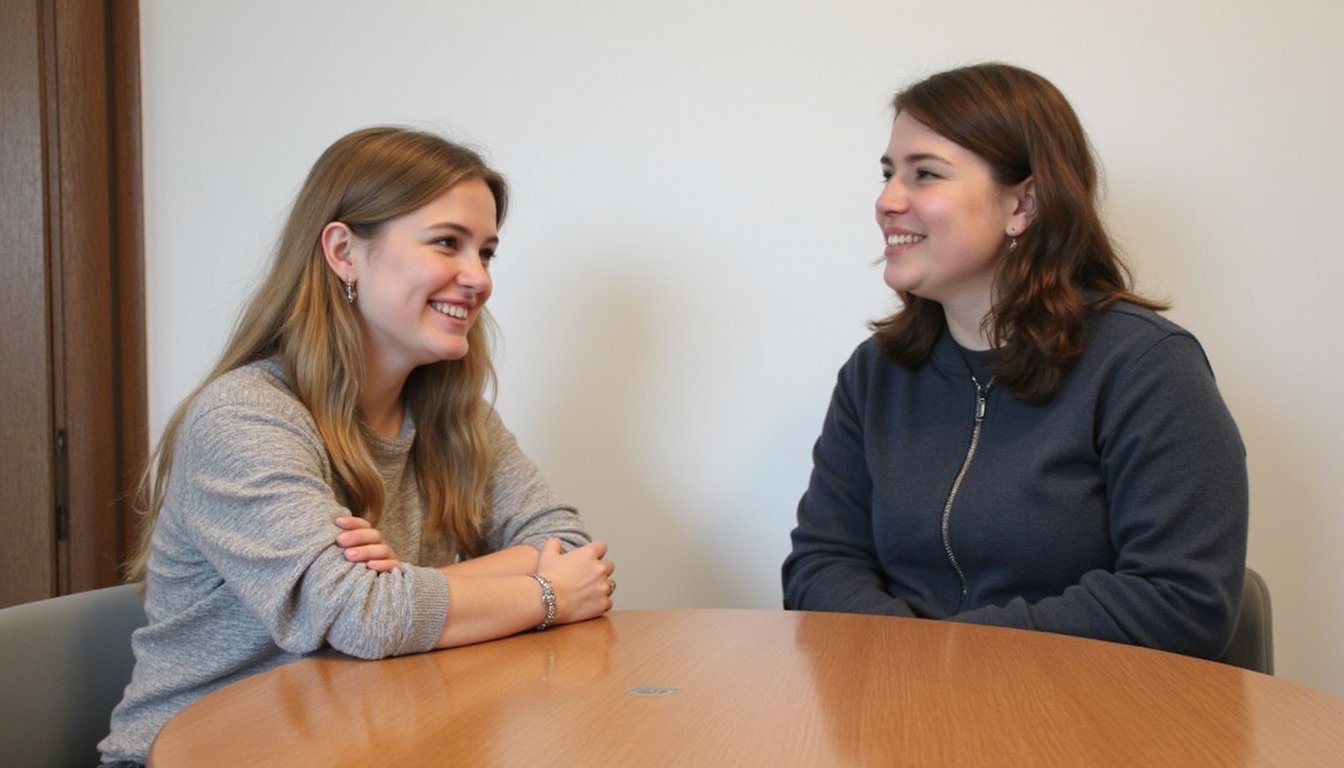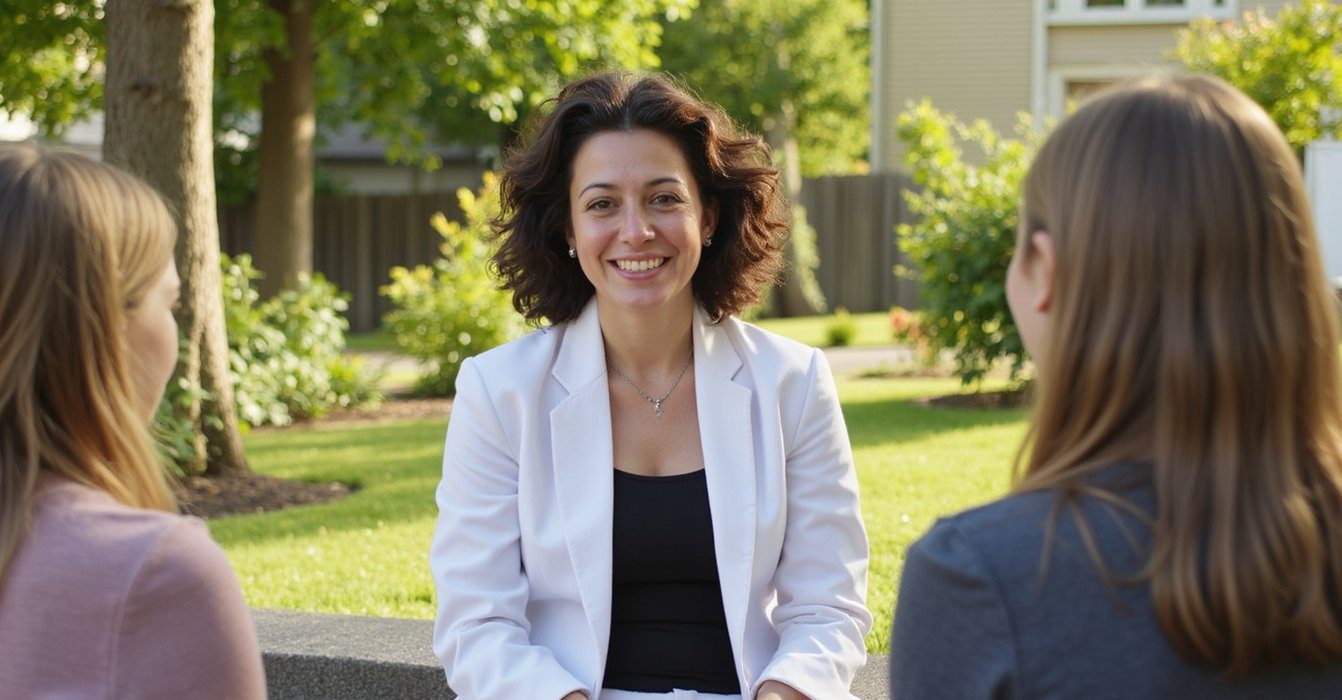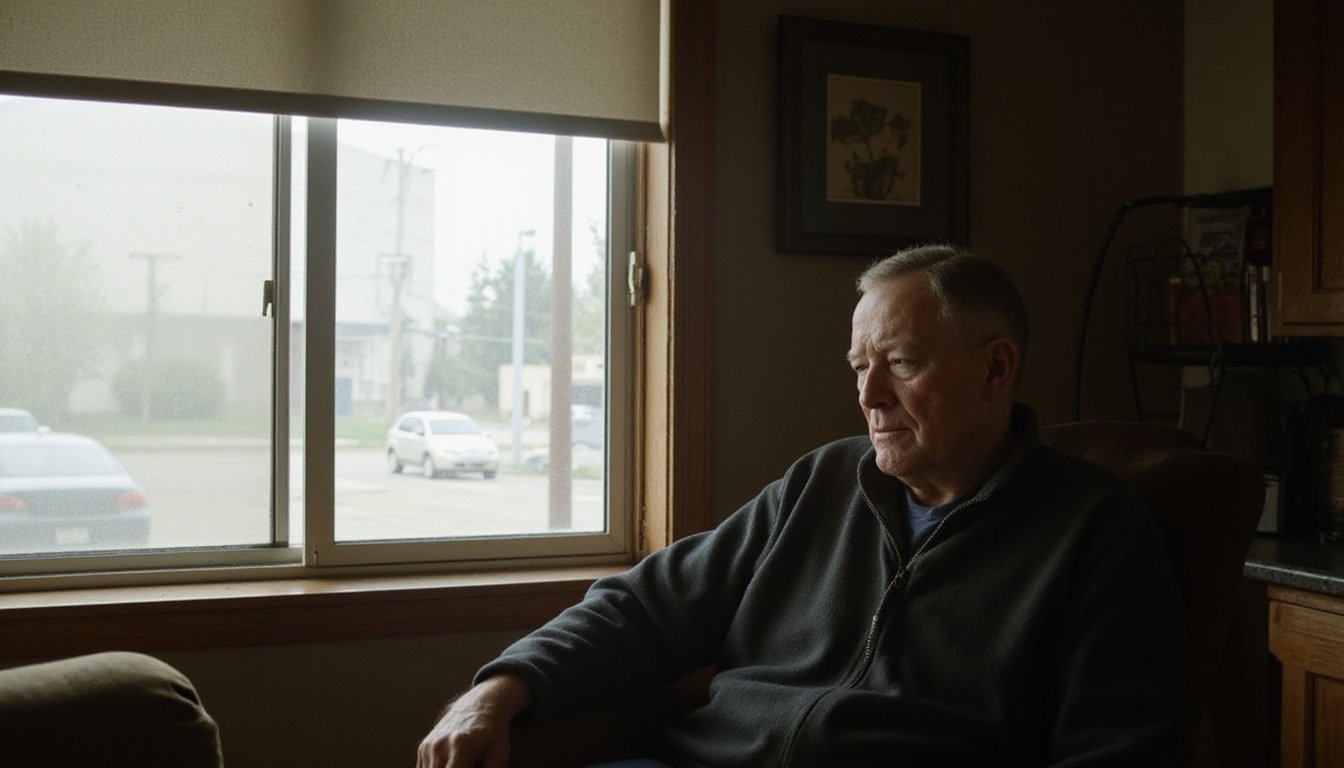Community support plays an essential role in your recovery journey by greatly reducing relapse risks through shared experiences and peer connections. You’ll find that structured peer mentorship programs improve long-term success rates by 10%, while integrated support networks decrease relapse rates by up to 40%. Recovery community centers provide safe, judgment-free environments where you can access important resources, healthcare services, and meaningful relationships. Understanding these support systems can transform your path to lasting recovery.
The Power of Shared Experiences in Recovery

When individuals struggling with addiction come together to share their experiences, they create a powerful foundation for sustained recovery. Through shared narratives in programs like Alcoholics Anonymous, you’ll find your relapse risk decreases by 35% compared to other treatments. A key factor in successful recovery is the development of recovery-supportive social networks that help maintain long-term sobriety. Journaling for self-reflection can be a valuable tool to process your recovery journey.
The collective healing power of peer support allows you to practice recovery strategies while building emotional resilience against triggers. You’ll benefit from structured meeting schedules that disrupt substance use patterns, while transparent dialogue with peers strengthens your commitment to sobriety. Members gain valuable insights through social learning by observing others’ successful recovery behaviors.
In these supportive environments, you’re able to process trauma, develop healthy coping mechanisms, and receive consistent emotional validation. Research shows that participating in group settings not only reduces isolation but also provides the accountability you need to maintain your recovery journey.
Building Strong Support Networks Through Community Centers
When you connect with peer mentors at recovery community centers, you’re tapping into a proven support system where members actively participate for nearly half of every 90-day period.
Your recovery journey becomes stronger through these centers’ extensive services, which combine addiction-specific support with practical resources like vocational training and healthcare access. Research shows that individuals experience higher meaningfulness in their daily lives when visiting these centers.
You’ll find these centers create safe, judgment-free environments where both paid staff and volunteers work together to serve about 125 individuals monthly, offering evidence-based support particularly valuable for those managing multiple substance use challenges. Members consistently report that recreational activities and volunteer opportunities rank among the most helpful services provided by these centers. The centers demonstrate strong support for those using medications for opioid treatment, with 77 percent providing direct assistance to individuals on MOUDs.
Peer Mentorship Drives Success
Through structured peer mentorship programs at community centers, individuals seeking addiction recovery gain access to proven support systems that greatly improve their chances of long-term success.
The mentorship dynamics create powerful accountability mechanisms, with data showing a 10% reduction in relapse rates and improved treatment adherence among participants. Treatment teams can provide direct introductions to potential mentors for those beginning their recovery journey. Shared experiences between peers help establish a foundation of trust and relatability.
You’ll find that peer support greatly enhances recovery outcomes through multiple channels. Your engagement with experienced mentors provides both emotional reassurance and practical guidance, while strengthening your social support network. Research demonstrates that participants are 45% more likely to maintain abstinence when engaging in peer support programs.
Community centers facilitate these connections, offering evidence-based interventions like the Mentorship for Addiction Problems (MAP) program. This structured approach helps you develop essential coping strategies, recognize triggers, and maintain long-term sobriety.
As you progress, you’ll gain valuable skills that can transform your recovery journey.
Safe Spaces Foster Healing
Recovery centers serve as essential sanctuaries where individuals can build lasting support networks while accessing thorough care services. In these safe environments, you’ll find healing atmospheres that foster trust and reduce barriers to care, particularly important for the 49% of members managing mental health conditions alongside addiction recovery.
With relapse rates between 40-60%, community support becomes crucial for long-term success. These centers create extensive support through:
- Consistent engagement opportunities, with members visiting 46% of days and staying an average of 3 hours per visit
- Diverse programming spanning 23 different services, all rated above 5/7 for helpfulness
- Inclusive spaces welcoming marginalized populations, including those with criminal justice involvement (24%) and severe financial challenges (88% earning <$50k annually)
This supportive framework enables sustained recovery while addressing both immediate and long-term healing needs. The centers’ effectiveness is demonstrated through participants reporting increased rates of abstinence after three months of engagement.
Breaking Isolation: Peer Support and Mutual Aid Groups

Since isolation often fuels addiction, peer support and mutual aid groups serve as essential lifelines for sustainable recovery.
When you join these communities, you’ll connect with others who understand your journey, forming crucial social connections and accountability partnerships that reduce relapse risk by 35%. Meaningful relationships formed in these groups often develop into life-long friendships.
Research shows that peer support greatly improves your chances of maintaining sobriety through shared coping strategies and real-world experiences. Whether through 12-step programs or other formats, you’ll find a group that aligns with your recovery needs.
You’ll benefit from mentors with lived experience who can offer practical guidance while helping you build resilient support networks.
These groups also address mental health challenges, with participants reporting lower depression and anxiety levels compared to those in traditional treatment alone.
Through mutual aid communities, you’ll transform isolation into collective strength, replacing substance-seeking behaviors with meaningful relationships that sustain long-term recovery.
Access to Resources and Healthcare Integration
When you’re seeking addiction treatment, maneuvering healthcare systems can feel overwhelming without proper guidance and coordination between services.
You’ll find greater success through integrated care models that connect primary care, emergency services, and specialized addiction treatment resulting in 30% fewer hospital readmissions and improved long-term recovery outcomes. Research shows that patient portal usage reaches nearly 67% when addiction treatment is linked with primary care practitioners. The adoption of Vermont’s hub and spoke model has significantly improved treatment access by connecting specialty centers with local primary care offices.
Through established healthcare partnerships and Medicaid coverage, you can access extensive resources including medication-assisted treatment, which offers success rates up to 41% compared to traditional approaches. Bridge clinics now provide accessible comprehensive care to ensure patients receive immediate support when they need it most.
Bridging Treatment Care Gaps
Despite significant advances in addiction treatment, substantial gaps remain in healthcare delivery and resource accessibility for individuals seeking recovery. The integration of collaborative care models has proven essential for bridging these gaps, particularly through structured treatment continuity approaches.
You’ll find evidence-based solutions making significant impacts through:
- Hub-and-Spoke systems that expand provider capacity and guarantee thorough coverage for medication-assisted treatment (MAT)
- Primary care integration that increases treatment retention rates from 10-20% to 50% through consistent support and monitoring
- Emergency department partnerships that create seamless shifts to long-term care while reducing hospital readmissions
These integrated approaches don’t just improve health outcomes they’re cost-effective too.
Coordinated Service Navigation
Building on proven treatment models, coordinated service navigation emerges as a powerful driver of successful recovery outcomes. You’ll find that coordinated care notably reduces relapse rates through seamless integration of healthcare, social services, and community resources. Service alignment guarantees you’re receiving extensive support tailored to your unique recovery journey.
| Service Type | Benefits | Success Metrics |
|---|---|---|
| Healthcare Integration | Continuous Medical Support | 66% Recovery Rate |
| Case Management | Personalized Care Planning | 40% Lower Relapse |
| Community Resources | Social Support Network | Enhanced Engagement |
| Crisis Response | 24/7 Emergency Access | Rapid Intervention |
Through this integrated approach, you’ll gain access to specialized treatment options, financial assistance programs, and peer support networks. Research shows that coordinated services lead to improved long-term recovery sustainability and stronger engagement in recovery activities.
Cultural Competency and Inclusive Recovery Spaces

As recovery communities evolve to meet diverse needs, cultural competency has emerged as a cornerstone of effective addiction treatment. By embracing cultural humility and incorporating faith-based interventions, treatment providers can create inclusive spaces that honor your unique spiritual and cultural identity while fostering trust in the recovery process.
Success in culturally competent recovery support depends on:
- Integrating traditional rituals and ceremonial practices that resonate with your cultural background
- Providing multilingual services and culturally adapted materials to guarantee clear communication
- Involving extended family members in ways that align with your community’s values and expectations
You’ll find that programs emphasizing cultural competency often achieve better outcomes through enhanced treatment adherence, improved client satisfaction, and stronger therapeutic relationships between providers and participants.
Measuring Success Through Community Engagement
Successful addiction recovery programs rely heavily on meaningful community engagement metrics to evaluate their effectiveness and drive continuous improvement.
You’ll find that tracking participation in peer support networks, measuring access to community resources, and monitoring social functioning improvements provide essential data points. These metrics help determine how well recovery programs meet participants’ needs.
When you engage with community-based support systems, your progress becomes measurable through multiple indicators from attendance rates at group meetings to the strength of your support relationships.
Recovery programs continuously adapt their approaches based on community feedback and outcome measurements. By examining both quantitative metrics like sobriety duration and qualitative factors such as improved family relationships, you’ll gain an extensive understanding of your recovery journey’s success within the community support framework.
Frequently Asked Questions
How Long Should Someone Stay Connected to Community Support After Achieving Sobriety?
You’ll need to maintain long-term connections to community support indefinitely, as research shows 40-60% of people relapse without ongoing support.
While your involvement may evolve over time, staying connected helps protect your sobriety.
Evidence indicates that continued participation in support groups and community programs greatly improves your chances of maintaining recovery.
You can adjust your level of engagement based on your needs, but don’t completely disconnect.
What Role Do Family Members Play in Community-Based Recovery Programs?
When you’re a family member involved in recovery programs, you’ll play vital support roles that directly impact treatment success.
You’ll help reshape family dynamics through active participation in therapy sessions, open communication, and creating safe spaces for healing.
You’ll learn alongside your loved one, gaining education about addiction while developing healthy coping strategies.
Your involvement strengthens the recovery foundation and provides essential emotional backing during challenging times.
Can Online Recovery Communities Be as Effective as In-Person Support Groups?
While online meetings can be effective, research shows they work best when combined with in-person support.
You’ll find virtual support offers unique benefits like 24/7 accessibility and reduced stigma, but in-person groups typically lead to higher rates of sustained sobriety.
If you’re choosing between formats, consider using both online meetings can supplement your recovery journey, while face-to-face connections provide essential non-verbal communication and stronger accountability through shared experiences.
How Do Seasonal Changes and Holidays Affect Community Support Participation Rates?
You’ll notice significant fluctuations in seasonal participation during winter months, when shorter days and SAD symptoms can reduce your motivation to attend support meetings.
Holiday challenges, particularly during major celebrations, often lead to lower attendance as you navigate family obligations and emotional triggers.
During summer, you might find higher participation rates due to improved weather conditions, though social events can create new recovery pressures requiring consistent community engagement.
What Financial Assistance Options Exist for Accessing Community Recovery Services?
You’ll find numerous financial assistance options to access recovery services.
Scholarship programs through organizations like AAC can greatly reduce treatment costs, while SAMHSA grant funding often supports free community programs.
You’re also eligible for sliding-scale fees at many outpatient centers based on your income.
Don’t forget to check if you qualify for Medicare/Medicaid coverage, and explore nonprofit grants from local recovery groups that provide direct financial aid.






